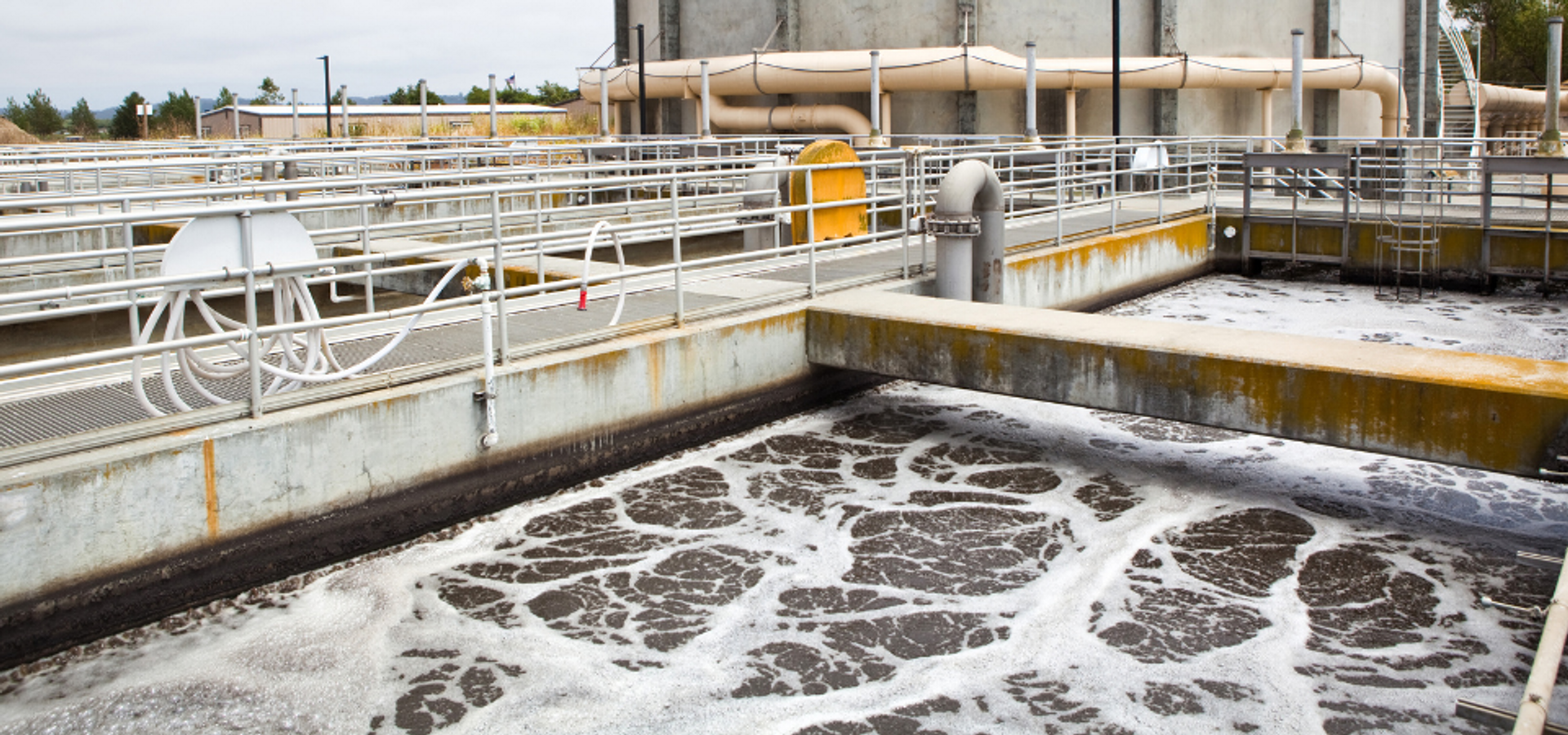
EnviroZyme® Eliminates Foam in Municipal Wastewater Trial
Background
EnviroZyme® partnered with a municipal wastewater treatment plant in New York that receives wastewater with high FOG (fat, oil, and grease) content from a local snack food manufacturer, as well as waste from the nearby city, and had been experiencing issues with severe foaming.
The proliferation of foam in wastewater treatment plants is subject to a number of factors—including surfactant content, FOG load, sludge age, filamentous bulking, etc. —and often negatively affects settling, the separation and compaction of activated sludge, the sludge volume index (SVI), effluent quality (particularly with regard to TSS), and so on.
In the case of this particular plant, the foaming issue had progressed to the point that plant operators were forced to use a pool skimmer daily in order to remove it, put it in wheelbarrows, haul it off, and pay for it to be incinerated. Clearly, the foam was a labor- and cost-intensive problem.

The Trial
Over the course of the trial’s 30 days, the plant experienced an average daily flow of 800,000 gallons. Based on this flow rate, half-pound water-soluble pouches containing our WWT 2B Brown municipal and industrial wastewater treatment product were tossed into the aeration tank at a dosage of 5 pounds per day for the first 10 days, and then 1 pound per day for the remaining 20 days.
WWT 2B Brown’s special blend of microbes, combined with a micronutrient blend selected to ensure maximum biological activity, are a great fit for treating foam by acting on some of the key foam-causing agents. Specifically, they help break down FOG into other smaller molecules, while simultaneously controlling the population of any existing filamentous bacteria through competitive exclusion.
After just 2 weeks of treatment, the foam had largely dissipated, and after 3 weeks, it had entirely disappeared.


In addition to dissipation of the foam itself, BOD and TSS levels dropped in the effluent, despite higher BOD and TSS loads:
| Before Treatment (August) | While Treating (September) | |||
|---|---|---|---|---|
| BOD Influent (mg/l) | BOD Effluent (mg/l) | BOD Influent (mg/l) | BOD Effluent (mg/l) | |
| Week 1 | 158 | 3 | 118 | 2 |
| Week 2 | 265 | 3 | 254 | 2 |
| Week 3 | 273 | 3 | 366 | 2 |
| Week 4 | 115 | 3 | 304 | 2 |
| Average | 203 | 3 | 261 | 2 |
| Before Treatment (August) | While Treating (September) | |||
|---|---|---|---|---|
| TSS Influent (ml/l) | TSS Effluent (ml/l) | TSS Influent (ml/l) | TSS Effluent (ml/l) | |
| Week 1 | 69 | 7 | 101 | 3 |
| Week 2 | 64 | 6 | 236 | 3 |
| Week 3 | 340 | 7 | 152 | 3 |
| Week 4 | 36 | 4 | 302 | 3 |
| Average | 152.25 | 6 | 197.75 | 3 |
As indicated by the data, effluent BOD decreased by 33% even with 28% higher influent BOD waste, and effluent TSS decreased by 50% even with 30% higher influent TSS waste.
Conclusion
Evidenced by the photographs and BOD and TSS measurements, the use of EnviroZyme’s WWT 2B Brown maintains a better system condition and efficiency. Balance is essential to a healthy activated sludge process, and the delivery of our carefully selected bacteria and micronutrient package restores balance, addressing the root cause of the foam.

Are you interested in achieving similar results for a municipal or industrial collection system, treatment plant, activated sludge system, SBR (Sequencing Batch Reactor), or trickling filter and rotating biological contactors and lagoon system? Contact us by filling out the form below.